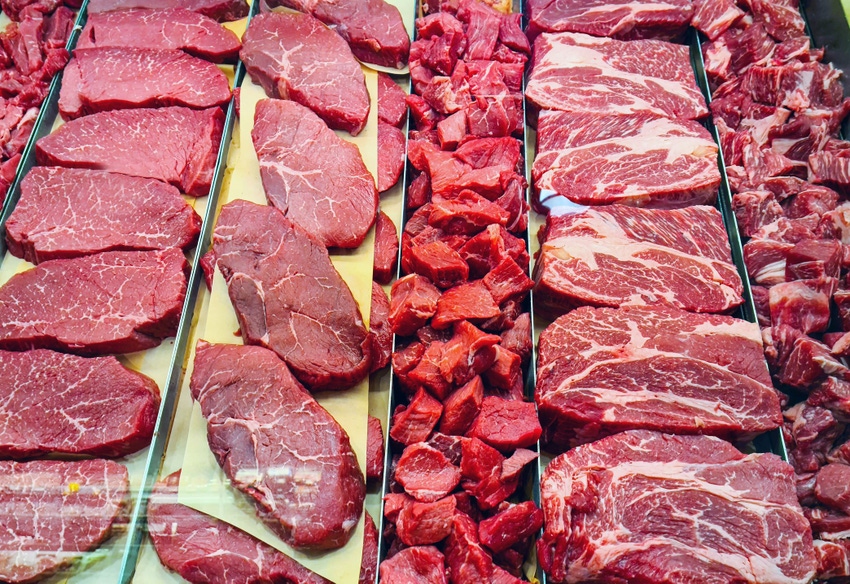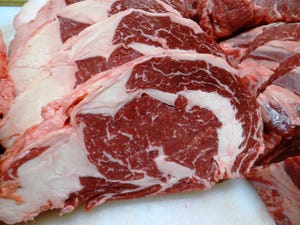$3M investment at Illinois will bring ‘joy of meat’ to more people
Researchers examine how diet, genetics and management influence meat quality, and how that translates to consumer choice.
April 12, 2024

The Meat Science Lab at the University of Illinois Urbana-Champaign is getting a much-needed facelift, thanks to a combined $3 million in infrastructure investments from the College of Agricultural, Consumer and Environmental Sciences, Facilities and Services, and the USDA's new Research Facilities Act Program. The upgrade will modernize the meat science research, teaching and outreach facilities — last updated in the early 1980s — and address HVAC and structural issues.
The Meat and Egg Sales facility housed in the building won’t see major changes or service interruptions, aside from a new ceiling and overall HVAC upgrades — welcome news for in-the-know locals who frequent the shop for fresh, local products on Wednesdays and Thursdays. Instead, the investment will focus on improving research capacity.
“Since the 1980s, the meat science program has really reoriented towards improving consumers’ experiences with meat. But our research spaces don’t reflect that,” said Anna Dilger, professor in the Department of Animal Sciences, part of the College of ACES at Illinois.
Dilger works closely with assistant professor Bailey Harsh to understand how diet, genetics, management or other factors influence meat quality, and how that translates to consumer choice at the supermarket and satisfaction at the dinner table. Among other things, their research involves cooking and serving meat products to volunteers who sign up for consumer taste panels. Currently, the kitchen is very small, and the volunteer space is difficult to access and not very inviting.
“These funds will allow us to expand our test kitchen and create a flexible and welcoming space to interact with consumer volunteers, host workshops with stakeholders, and teach classes like our grilling and barbeque science and hospitality management classes,” Dilger said. “I'm excited to have this new space to bring the joy of meat and meat science to more people.”
The building, located on Maryland Drive in Urbana, was originally part of the College of Veterinary Medicine at U. of I., housing its large animal hospital. Major renovations were required when it was converted to the Meat Science Lab in the 1980s, but Dilger says the building has remained largely untouched despite changes in faculty research and significant improvements in HVAC technology over 40 years.
“The update will make us more energy efficient and more comfortable,” Dilger said. “There are some delicious smells in the building, and there are some not-so-delicious smells. A new HVAC system will help us deal with those less pleasant odors.”
Maranna Binder, F&S architect in capital maintenance planning, is excited the campus Academic Facilities Maintenance Fund Assessment committee opted to fund this HVAC project. “HVAC systems hold the highest portion of the campus deferred maintenance backlog and have the potential to make a drastic impact on energy usage, air quality and thermal comfort. With a portion of the building being public-facing, the difference will be apparent within the university community and beyond."
ACES Dean Germán Bollero emphasized a nationwide need for investments in agricultural research infrastructure. “We’re extremely grateful to have received nearly $500,000 from the new USDA Research Facilities Act Program, which is 25% of the total allocation available for projects across the country. But this is just a start; we need to continue to modernize our facilities and equipment to keep pace with our innovative and interdisciplinary ideas to feed and fuel our global population sustainably.”
With funding secured, project planning is now underway.
“The building has served us well for nearly 40 years, but we’re looking forward to a space more tailored to our current focus of supporting production agriculture in Illinois through improving the eating experience of meat consumers,” Dilger said.
You May Also Like



